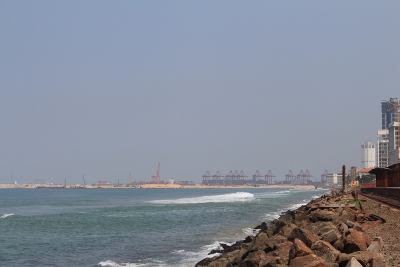GIS MAP VIEWER
The GIS Map Viewer provides interactive functionality where spatial layers of critical infrastructure assets are viewable in the context of climate change and climate change-related hazard data. This facilitates an increased understanding of the distribution of assets and the extent to which those assets will be impacted by the extreme scenarios of climate change analyzed through this project. The GIS Map Viewer allows users to select regional or national CI data by sub-category of each sector - for example oil refineries in the energy sector or sanitation facilities in the water sector and to overlay on climate change hotpot categories of temperature and precipitation changes.
DATA INVENTORY
The Data Inventory contains detailed information about the critical infrastructure, such as the capacity and year constructed. The Data Inventory also presents useful statistics such as total capacity by region or country, and allows users to sort through data by infrastructure sector, sub-category, and location.
METADATA CATALOGUE
The Metadata Catalogue displays an interactive and searchable metadata catalogue showing key metadata elements as a table. Metadata are captured using the international geographic metadata standard ISO19115 with records exportable in this format for importing to other external metadata applications.
Loading ...

Data Inventory
Metadata Catalogue
TA9191 critical infrastructure datasets
ABOUT TA9191
Critical Infrastructure
This Geospatial Database is part of a technical assistance project the Asian Development Bank (ADB) is implementing, “Building Climate Change Resilience in Asia’s Critical Infrastructure.” This is a joint venture project between the International Centre for Environmental Management (ICEM), the Asian Disaster Preparedness Center (ADPC), and Philkoei International to address emerging development challenges identified in ADB’s long term corporate strategy through the promotion of infrastructure investments that are green, sustainable, and climate resilient (ADB, 2018). The main project objectives are to enhance the knowledge base on climate change risks to critical infrastructure in South and Southeast Asia and to build a better understanding of necessary actions and innovations for climate change resilient critical infrastructure.

PROJECT SECTORS
The project focuses on three key sectors of critical infrastructure – energy, transport, and water – with assessments undertaken at regional, national, and case study (catchment) scales. The infrastructure assets and systems contained in the database have been gathered from primary and secondary sources and compiled by experts in water, transport, and energy sectors. Inventories have been confirmed with national representatives where possible, and all available information about each asset has been included in the inventory, such as capacity and year of construction, but data was not available for all assets. The database is intended to be continually updated as new information becomes available and new infrastructure assets are planned or completed.

ENERGY
Energy
Oil ports, Oil productions, gas, transmission line, substation

WATER
Water
Dikes, barries, dams

TRANSPORTATION
Transportation
Roads

